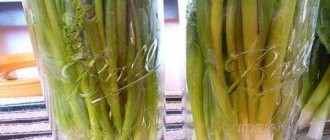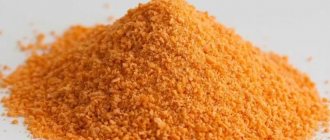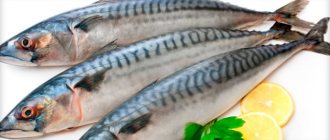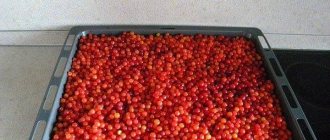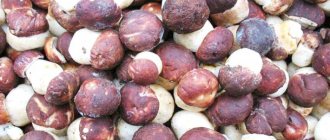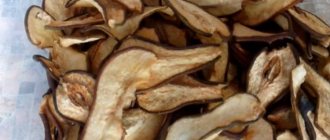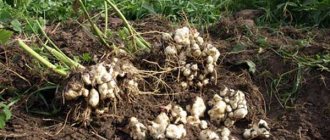Types of worms and their descriptions
The main types of worms used by fishermen include dung and earthworms (also called earthworms). In this case, earthworms are divided into sublists and crawlers, but they should not be considered as independent species.
- The habitat of earthworms is loose and moist areas of soil, which are well protected by the shade of trees and shrubs or rotten leaves (underfoliage).
- Those representatives of invertebrates that crawl out onto paths after rain are called crawlers. Storing crawlies is quite a troublesome task. Especially considering their high requirements for humidity levels, temperature and oxygen. If storage conditions are violated, the raincoat will die in a short time.
- Based on the name, the habitat of the dung worm is animal waste, as well as an organic environment with signs of decay (food remains, for example). Fishermen use dung beetles more often, as they are more unpretentious in storage.
Before storing worms for fishing at home, separate containers are prepared for each type. Invertebrates cannot be kept together. For example, the dung beetle produces a substance that is toxic to other types of worms. But for him, the fumes from the rotting remains of his brothers are dangerous.
Storing worms for fishing at home and in apartment conditions
The most popular and effective way of long-term storage of worms for fishing at home is the use of special boxes prepared in advance, which are filled with a nutrient substrate. Fishermen consider only a wooden box as an ideal container. If there is no box, buckets or basins made of metal and plastic will do. The larger the capacity of the dishes used, the better the result, since worms really love unconstrained space.
For long-term storage of worms at home, damp gauze is attached to the bottom of the box and on its sides. Then soil with mixed rotted leaves, moss or grass is poured onto the bottom of the box. Worms are placed in the resulting humus. For long-term preservation of dung representatives of this species, manure is poured instead of soil.
It is necessary to periodically check the soil moisture and feed the worms weekly. Any leftover food carefully minced through a meat grinder is used as bait food. The crumbs are added to the soil in the box and mixed. The described method is excellent for storing worms in winter; in summer, fishermen resort to another equally effective method.
You can store worms in the summer in ordinary holes dug in your garden. The diameter of the pits should not exceed 60–70 cm, and their depth will be within 50 centimeters.
To prevent the nozzle from spreading, the bottom of the pit is covered with a fine-mesh mesh and sprinkled with a layer of earth. You can feed the bait with weak coffee grounds or tea leaves. During a long dry period, it is necessary to water the hole so that the worms do not die due to drying out of the soil. All of the above methods for storing worms while fishing were invented and tested in practice by our grandfathers, so no one doubts their effectiveness. You can also store worms at home on the balcony, in the refrigerator, in an aquarium, or in canvas burlap bags.
We recommend reading
How to remove maggots at home and get rid of the smell Maggots are bait without which good fishing is indispensable and the fisherman should always have it on hand.
Which worms last longer?
Not all types of worms are suitable for long-term storage at home. Dung worms and underleaves can be stored the longest if you provide them with a comfortable habitat. Storing crawling earthworms, in turn, requires specific conditions, failure to comply with which will lead to their rapid death.
It must be taken into account that different types of worms cannot be stored in the same container. For example, dung worms secrete a liquid that is poisonous to other types of worms, but they themselves can be poisoned by the rotting remains of dead worms of another species.
Fishing storage
When fishing, it is important to choose the right container for storage. If you have a wooden or plastic box, then it must have ventilation holes. Only a small diameter, otherwise the worms will be able to get out through them. You can, of course, store it in a glass jar. In this case, it is enough to pierce holes in the lid, or you can simply cover it with gauze. But we do not recommend this method for the simple reason that if it is constantly carried, the glass jar can simply break.
How to collect crawling worms
It must be remembered that light crawlers are best suited for fishing, they are denser and more durable than their dark counterparts. It is best to collect earthworms after rain in the dark. A few hours after the rain, you can take a flashlight and go out onto earthen and even asphalt paths laid next to the ground, where crawlers will crawl out after the rain. Also, this type of worm often chooses areas without high vegetation near bushes and trees, where they are easy to notice. It must be remembered that crawlies do not like bright light, so it is better to take a flashlight of moderate power.
There are also some tricks. If there are no rains in the near future, but you need bait for fishing, you can water the area of land where the worms can live, and in the dark they will definitely appear. You can also choose a place with rich soil, put damp rags or straw on it, then cover it with boards, and the worms themselves will crawl into the wet substrate. However, once collected, the worms must be preserved.
How to get a crawl
The crawler is considered the largest worm used as bait in fishing. Its length can reach 30 cm, thickness – 9 mm. The body of the worm is covered with mucus, which protects it from drying out and promotes rapid movement. Hunting for a crawl has its own characteristics. In order to find this worm, you need to walk along park or garden paths. If you notice piles of earth while walking, carefully move them. Round holes plugged with leaves will indicate the home of the worms. It is useless to dig the crawl; its passages run very deep. Come to this place when it gets dark. Shine a flashlight on the area adjacent to the hole. The crawlers, as a rule, lie near the entrance to the burrow, with their tail part lowered into it. Carefully approach the “prey”, grab it with three fingers and pull the worm out of the hole. The crawler is an ideal bait for catching large fish.
After collecting the bait, place it in a wooden or cardboard box, or preferably in a clean canvas bag, along with the soil from which you dug it out. Plastic bags and cans are not suitable for storing worms.
When fishing in the traditional way using a float rod, you cannot do without bait. A universal bait that can be used to catch fish at any time of the year is worms. To collect or dig, you should know in what places and on what soil they are found.
Instructions
- Roach, bream and medium-sized carp fish are good to catch with a dung worm.
It is the shortest and thinnest of all those used on worms.
Its color is reddish-yellow. When placed on a hook, such a worm secretes a liquid with a pungent odor. The dung worm
should be looked for in rotting manure; it is less common in dry or very damp manure. Sometimes such bait can be found in greasy soil, for example, in an abandoned greenhouse. - The earthworm is larger and has a gray-white color; There are large specimens of a pinkish tint. earthworm _
- mine in, at a depth of 15-20 cm. Clay will do, but it’s best to try on well-kept garden soil. The warmer the air, the deeper the worm goes from the surface. When getting an earthworm, you
cannot do without a shovel. But on the eve of inclement weather, an earthworm crawls to the surface. Mainly used for fishing. - An even larger worm is the underleaf. It has a red color with a bluish or purple tint. The habitats of the underleaf are under old wood, sawdust, shavings, under heaps of rotten leaves. Such worms usually lie openly on damp soil; there is no need to dig them up. The fish reacts well to the subleaf, but on the hook it quickly stops squirming and hangs motionless.
- But the crawl sometimes reaches a length of 20-30 cm. Walk along garden or park paths. If you see piles of dirt, move them - often you will see a round hole plugged with leaves. If you come to this place in the dark with a flashlight, you are highly likely to find a crawler peeking out. Grab it with your fingers near the ground and carefully pull it out, trying not to rush (otherwise the worm will break). Large fish are caught well on the crawl.
To find a complete bait for fishing, you need to know where different types of worms prefer to live and take into account the peculiarities of their behavior. There are ways to lure earthworms to the surface that can be used in urban and rural environments.
Fishing enthusiasts are not always able to buy worms in pet stores. Before the weekend, especially on Friday evening, it often turns out that they are all sold out. Therefore, it makes sense to pay attention to ways to search for bait yourself. The most suitable for it are earthen (rain), dung, water, and subleaves.
Storage conditions
How and where to store worms for fishing at home? It is necessary to create an environment for them that is as close as possible to the natural one for a particular variety of invertebrates, and take care of feeding them.
- To ensure that the storage of worms for fishing lasts as long as possible, they are fed with crushed eggshells or chalk at least once every 2 weeks. The calcium contained in these foods contributes to their longevity.
- It is very important that the moisture level of the soil in which the wards are located is not below 70%.
- In places where underground inhabitants live, it is important to comply with sanitary standards. To do this, dead individuals are regularly removed, taking into account that only in normal environmental conditions will invertebrates be able to live and even reproduce.
- If the “stock” increases, you need to transplant some of the worms into another container or release them in the park to increase the living space of the rest of the bait.
Method of storing worms
A layer of earth about five centimeters is poured onto the bottom of the bucket. Then pour a layer of fallen dry leaves, preferably last year's, which have begun to decompose. The leaves are placed with a slight compaction in a layer of about ten centimeters. And so, alternating a layer of earth and a layer of leaves, they are slightly moistened, but you cannot overdo it with moisturizing.
At least four such layers are made. It is necessary to select dishes of appropriate volume in advance. The most important thing, and this is very important, is that the soil must be taken from the place where the worms were obtained. In other, unusual soil for them, worms will not live long. They may die within a few days.
Read! Fishing with cake
Having prepared our storage in this way, we release the worms there. Closing the lid tightly, put it in a cool place, such as a cellar or basement.
You can also store it at home by finding a cooler place, away from the heating system.
How to properly store worms
The key concept that needs to be learned when storing worms at home or even outdoors is to create an environment close to their previous life. In addition, it is important to constantly feed them so that they do not die.
The following calcium-rich foods are recommended as a supplement:
- eggshells, pre-crushed;
- chalk that has been previously crumbled.
With timely feeding and conditions acceptable for their survival, the worms will live for a long time and wait for the next fishing trip.
At home
It is very important to understand that worms come from soil or manure; normal home conditions are not suitable for them. Here it is important to find the ideal environment that will support their existence. To do this, you need to select a certain container - a plastic bucket or metal dish, inside of which the nutrient substrate will be placed. The size of the container should be large so that the worms can move comfortably inside. It is important to make holes first so that air can get inside.
Worms for fishing
To preserve worms, it is important to maintain comfortable conditions for their survival:
| Lure | No less than three times a month. |
| Soil moisture | Within 70-80%. |
| Sanitary standards | Remove dead worms from the soil from time to time so that they do not interfere with reproduction. If there are more live worms, you need to store the worms in different containers - move some of the livestock to another place. |
Storage in an apartment
The conditions in which worms should be stored for fishing at home should not be too different from those at the countryside. But in this case, you will need to prepare a plastic or enamel container with a lid for them. It is also possible to use boxes, buckets, and pots that are definitely not planned to be used on the farm.
The selected container is filled with a moistened soil substrate with the addition of peat, rotted leaves or hay, after which the worms are introduced into it. The soil will need to be moistened regularly, and its inhabitants will need constant feeding.
It is important that invertebrates can breathe normally, otherwise they will die. Therefore, it is impossible to cover the container with airtight materials.
But you shouldn’t give the bait the opportunity to spread throughout the apartment either, so they find a compromise solution. Many small holes are made in the plastic cover for air access. You can also cover the container with a rag (gauze) or other similar material.
How to keep worms in winter
You can’t get worms in winter - all fishermen know this, so you should take care of feeding in the summer. To do this, just before the frost (they are different in different regions, so everyone should adapt to their own climate) dig up worms and put them aside. At the same moment you will need to build a wooden box. You need to understand that it should include about 20 kg of earth. Having dealt with this, you can go collect fallen leaves, with which you will need to cover a third of the box. Everything else is covered with soil. Next, they place the worms in a box and sprinkle them with soil.
Important! There should not be too many worms in the box, otherwise they will soon no longer fit in the box.
Next, you need to wrap the container with a damp cloth and send it to some cool place. It can be anything: a garage, a balcony, an attic, etc. The most important thing is to maintain positive temperatures. Earthworms for fishing should be fed once a day.
When going fishing, you can put the bait along with the ground in a special mitten. To prevent the bait from freezing, it is better to hide it under outer clothing and take it out as needed.
Features of feeding
Worms are considered a classic bait. Having this bait in stock, the angler can count on a good bite from varieties of carp fish and many river predators. This type of bait can be used for both float and bottom gear. The advantage of worms is their availability. Each fisherman can get them on his own. All he needs is a shovel and a piece of land. Most of the creeping creatures can be found in roadside earthen pits, areas near places where garbage accumulates and in manure heaps.
People who fish professionally usually grow worms at home. Becoming a breeder is not at all difficult - you just need to dig up or purchase several individuals and create a feeding environment for them. In the presence of water and food, crawling pets begin to actively reproduce.
The only drawback of earthworms is that they do not reproduce as quickly as the breeding specimens from the store.
It is better for professional fishermen to spend money and buy dendrobena or red Californian worms; such individuals are undemanding in terms of nutrition. The only thing that is important for them is that food arrives on time. They reproduce very quickly; a couple of individuals can breed more than 1,000 young in one year.
At any summer cottage and in the house you can always find something to feed the worms. According to reviews from fishermen who were involved in their home breeding, the main difficulty lies in something completely different:
- how to properly arrange a container so that your pets feel comfortable all year round;
- where to hide boxes for the winter;
- what foods worms like and in what form they consume them;
- what types of food are strictly contraindicated for them.
Arranging worms for the winter
To keep the livestock intact, you should figure out how to prepare the worms for winter long before the onset of cold weather.
Insulation of street collar
In the fall, you need to take care of nutritious compost. If the temperature under the shelter does not drop below +8°C, then the worms will work and reproduce all winter. If there is a lack of food, they will die.
First, a nutrient layer is laid on top of the substrate with worms. The mass must be moist, loose and breathable (otherwise the worms will suffocate). For food, plant residues, vegetables from the garden, ready-made compost from rotted solid waste or manure, wet cardboard, paper, etc. are suitable (read more at the link: “What to feed a prospector .” To make the mass loose, the mass is mixed or layered with leaves, straw, sawdust.The humidity of the nutrient bed is brought to 75-85%.The garbage will rot over time and will also go into food for the worms.
Before frost sets in, a microclimate will form in the substrate and a sufficient number of anaerobic bacteria will develop (their vital activity will also maintain the temperature). When it gets cold, the piles are covered with a thick layer of dry straw, leaves or sawdust. Its height depends on the local climate. There is a covering material on top, for example dense polyethylene, in which several holes must be made for air circulation. A layer of snow will also effectively protect the pile from frost.
If the weather permits, Prospectors will overwinter well in large containers. The sides of the containers are insulated with foam plastic (or other synthetic insulation) and lined with straw and sawdust. On top there is a breathable nutrient layer, dry straw (sawdust) and a lid.
Due to the difference between internal and external temperatures, effective gas exchange will occur in piles of any type. The worms will be able to move freely in the substrate and select areas with a suitable microclimate. At low temperatures inside the pile (from 0 to +4°C), the worms will spend the winter in suspended animation.
Tips from experienced anglers
And at the end of our publication, according to tradition, we offer you advice from experienced fishermen:
- It is better to add peat, moss, and sawdust to loosen dense clay soil. The substrate must be periodically loosened and mixed, ensuring its saturation with oxygen.
- Before fishing, you can put the potential bait into a “fighting state”: adding crushed brick to the substrate will give the bait an attractive bright red color, and cinnamon, vanillin, cake or unrefined vegetable oil will give it a seductive smell.
- For dung beetles, the use of attractants is undesirable: fish already find its “aroma” extremely attractive.
- If optimal conditions are created, the worms will not only survive, but will also begin to reproduce. Avoid overpopulation!
- No matter how or where you store the worm, you need to remember to remove dead individuals in a timely manner, otherwise the entire population will soon die.
In modern conditions, there is no need to bother with the extraction and provision of optimal living conditions for worms: in a specialized store you can purchase not only the necessary equipment, but also any bait. In short, if you have the desire, there will always be an opportunity for great fishing!
Storage at home
If you live in a private house or have a summer house, then a fresh worm in the warm season is not a problem for you at all! It is enough just to dig a small hole in the shade and fill it with loosened soil and rotted leaves. Next, the resulting soil mixture is watered and is ready to accept inhabitants - worms! Do not forget to periodically water the hole and feed the worms. Most common kitchen waste works well for this. Even if it is very hot outside, the worms will be near the surface and it is not difficult to dig up as many of them as you need for fishing.
Spread out food on top of the ground If it is not possible to organize storage outside or you need to preserve the worms in the winter, then you need to organize a home for your worms at home. A balcony or basement is suitable. The main condition is that the room temperature is within ten to fifteen degrees. If this condition is met, the worms may even begin to reproduce.
You can keep worms in a wooden or plastic box, but make sure there are no large gaps in it. You need to drill small holes in the bottom of the container for drainage. Holes are also drilled in the side walls. This is necessary for ventilation. Soil is poured into the container, fallen leaves, sand are placed in it, and the whole soil mixture is mixed. Another good option would be to purchase soil that is intended for flowers and sold in flower shops. Just remember to wet it before starting the worms.
Video “Universal storage tips”
This video describes in detail and very competently how to handle worms so that fish bite on them all year round.
Sources
- https://kakxranit.ru/raznoe/kak-soxranit-chervej.html
- https://intellifishing.ru/raznoe/kak-sohranit-chervey
- https://ArcheryRing.ru/bytovye-veshchi/kak-sohranit-chervej-na-zimu.html
- https://rybalkapros.ru/kak-soxranit-chervyakov-dlya-rybalki-zimoj.html
- https://lykistreli.ru/kak-sohranit-chervey-dlya-rybalki-v-domashnih-usloviyah.html
- https://luojatar.ru/sistemy/kak-hranit-chervej-dlya-rybalki.html
- https://IaRybak.ru/prikormka-i-nasadki/sohranit-chervej-dlya-rybalki
- https://manrule.ru/primanki-i-nazhivki/chem-kormit-chervej/
- https://vermitechnologii.ru/chem-kormit-dozhdevyih-chervey/
- https://rybalkavreke.ru/kak-xranit-chervej/
- https://fermabusines.ru/chervi/ryibalka/zimnyaya.html.
Types of worms for fishing
Despite the many personal names, worms belonging to the same family are used for fishing. The first of these is worth mentioning earthworm . It is called differently: rain, crawl, underleaf, and so on. In fact, this is one species - an earthen one, it’s just that fishermen gave it a lot of names based on its location: in the ground, after rain on the surface of the soil or even asphalt, under rotten leaves.
The dung beetle is another species from the same family that is successfully used in fishing. As the name implies, it can be found in stale manure, compost, and rotting food waste. Getting it is, frankly speaking, unappetizing, but what can’t you do for your favorite hobby!
The dung beetle, unlike its earthen counterpart, is much more unpretentious and demanding in terms of keeping conditions, however, some principles need to be known when handling this potential bait.
All earthen subspecies and the dung beetle do not get along together: they require different conditions of detention. In addition, the dung beetle is capable of poisoning its earthen counterpart with toxic secretions.
Home storage
The most common way to store worms at home is to use specially prepared containers filled with nutrient substrate. The ideal container would be a wooden box, but in the absence of one, you can use plastic or metal buckets and basins. In the latter case, you need to say goodbye to the integrity of the container: you need to make holes in it for air circulation. Worms need a large living space, so the larger the container, the better.
The container must be filled with nutrient substrate. The simplest option: this is loose soil (for dung beetles - food waste, manure) mixed with fallen leaves. Peat, moss, hay, straw can also be used, and chalk or eggshells can be used as a neutralizer. It is necessary to moisten the resulting composition - and you can move in the residents. The container must be covered with something, otherwise you will collect crawling creatures throughout the apartment. You can’t seal the “house”: the residents will suffocate. You can stretch a piece of cloth or gauze over the top - it will be ideal.
The ideal storage temperature is 6-10 o C. You can use a balcony or loggia for this purpose, but in the summer heat this is not the best option. A cool basement or cellar is ideal, or, in their absence, a household refrigerator. Just don’t forget to enlist the support of your household: not every wife will be sympathetic to the proximity of a box of worms and a pot of borscht.
During the process, you need to monitor the moisture and oxygen saturation of the soil. The substrate needs to be periodically watered and mixed, but you should not overdo it with water: the soil should be moist, but not wet! This is why the worm needs to be stored in an unsealed container: excess water drains through the holes and oxygen enters.
When kept for a long time, the “fish delicacy” needs to be fed periodically (once a week is enough). For this purpose, you can use chopped banana peel, drunk tea, cottage cheese, chopped raw potatoes, and moistened paper without printing ink.
Handling bait in the heat
Even the undemanding dung beetle becomes lethargic in the heat, so during summer fishing you should pay special attention to keeping the bait in a marketable condition.
If we are talking about a long fishing session, you can take a container with worms kept at home and place it in the most shaded place, in a draft. It is advisable to dig a hole under it: then it will be even cooler there.
You can simply store worms in a marketable form in a hole , and this method can be used both while fishing and at home if you have a cellar. To do this, you need to dig a hole, line it with a layer of mosquito net or loose fabric (preferably burlap, but many even use ordinary tights for this purpose).
After this, you need to fill the improvised container with soil of sufficient looseness (you can add sand or sawdust), populate it with worms, and then tie the fabric into a makeshift bag. An alternative option is to use a fine-mesh metal or plastic mesh as a “cover.” If the hole is deep, well lined to the top, and there is not much substrate with worms, you can do without tying the fabric or other protection against spreading.
During storage, one should not forget about periodic aeration of the soil with the addition of a sufficient amount of water. To maintain the optimal temperature, it is recommended to cover the hole from above with spruce branches.
Sometimes fishermen use linen bags or ordinary work mittens filled with substrate for similar purposes. They are hung in the shade in the wind and periodically dipped in water to moisten. For a one- or two-day session, this option is quite valid.
Storing worms in freezing conditions
When going fishing, the main thing is to prevent the bait from freezing. To begin with, you should pack it together with the substrate in several bags (to avoid tears), tie it up and put it in a fishing box. If the frost is mild and the box has sufficient thermal insulation, you can store bait there during fishing. Otherwise, you will have to follow the example of the fishermen of the past and warm the precious bait with your own heat, placing it under your clothes.
Please note that sealed containers and plastic bags are not intended for long-term storage: the worm does not receive enough oxygen, and the substrate quickly becomes compressed. To increase its viability in these conditions, you need to take fewer worms per amount of substrate and periodically let them “breathe” fresh air.
Tips from experienced anglers
And at the end of our publication, according to tradition, we offer you advice from experienced fishermen:
In modern conditions, there is no need to bother with the extraction and provision of optimal living conditions for worms: in a specialized store you can purchase not only the necessary equipment, but also any bait. In short, if you have the desire, there will always be an opportunity for great fishing!
- Excellent ventilation.
- Room temperature.
- Sufficient humidity.
- Rational nutrition.
Good day, dear readers of my blog!
With the onset of cold weather, the problem arises - how to preserve the worms until next spring.
In this article, I will describe to you the most accessible methods of keeping them, which will help not only preserve the population, but significantly increase the number of earthworms, stimulating them to reproduce.
A place for such temporary detention can be equipped anywhere; the earthworm is not picky about conditions of detention, and even the loudest sounds do not frighten it at all.
However, even a slight vibration terrifies the worms, they stop eating and often run away.
This is a defensive reaction developed over many thousands of years of evolution; vibration is perceived by them as a signal of the approach of their worst natural enemy - the mole.
If you are a regular reader of my blog, you probably already know the four most essential factors for successfully keeping earthworms.
- Excellent ventilation.
- Room temperature.
- Sufficient humidity.
- Rational nutrition.
But that's all later. And you need to start with the most important thing - with a container for keeping animals. Yes, I didn’t make a reservation – specifically animals. An earthworm is the same animal as a dog or guinea pig and therefore requires respectful treatment and the creation of suitable living conditions.
I myself keep my million-strong hornless herd all year round in a stall under the house - with a useful volume of 8 cubic meters. m. where I regularly bring “forage”.
But if you still decide not only to store worms in the winter, but also to increase their population, then you need to calculate the volume of the future home - approximately one liter of container per 10 individuals.
For simple conservation, without creating breeding conditions, you can use a much larger population in the same liter container, up to 100 heads.
So, it is better to take a plastic container of the selected volume, in one of the corners of which at the bottom make a drainage hole with a diameter of about one centimeter. I have already shown and told how to make excellent ventilation
Temperature Successful storage of worms should be carried out under optimal temperature conditions for their maintenance, from +17 to +23 degrees.
Humidity The humidity of the substrate should be at least 70%. If it is larger, then there is no need to worry too much about it - excess moisture will go out through the hole in the bottom.
Rational nutrition You can feed such animals with any organic waste . When moving to a new place of residence, I recommend moving them with a small amount of natural substrate. Thus, in an unusual habitat, the necessary microflora and fauna are quickly formed, and rapid adaptation to new living conditions occurs.
The main mistakes that almost all beginners make:
- grind kitchen waste, turning it into a homogeneous “porridge”
- cover the entire surface of the substrate with this “porridge”,
- They make a thick feed layer from this “porridge”.
Worms, like us, love a variety of foods and choose what they want at the moment. And if the assortment is wide, then it is eaten with greater appetite than a monotonous mishmash. Unground components release moisture more evenly and longer, and only to a shallow depth, than ground components. Therefore, the stability of the bulk of the living microcosm of the substrate is not disturbed.
If we cover the entire surface, even with a thin layer of mash, the ventilation of the entire volume of the substrate will be disrupted and the complete death of our living creatures may occur .
Therefore, you need to cover only one third of the worm territory and in no case with a thick layer. The maximum layer of “porridge” is 5-10 mm, or better yet, not crushed at all and on the same area.
And carefully cover the food supply with several layers of waste paper, cardboard or old rags, which will prevent a war with midges on the TV screen and on the computer monitor.
I even fill my huge stall for worms under the eco-house with food only in relatively small portions.
I hope that my experience in preserving worms in cold conditions will be useful to you and help you preserve these useful animals until spring.
Subscribe to my blog articles and be sure to share with your friends on social networks. A lot of new and interesting things await you ahead!
Just as we cannot remove the words from the song, in the process of writing three recent articles, we could not do without preparing and eating two pies with carp and one with herring in honor of the holiday.
PS I won’t be offended if you congratulate me - after all, today is Fighter Aviation Day!
Health and prosperity to you! Best regards, Victor Dulin.
Cloudflare Ray ID: 63a90f336e3415e8 • Your IP: 195.64.208.251 • Performance & security by Cloudflare
How and where to store worms for fishing at home? It is necessary to create an environment for them that is as close as possible to the natural one for a particular variety of invertebrates, and take care of feeding them.
